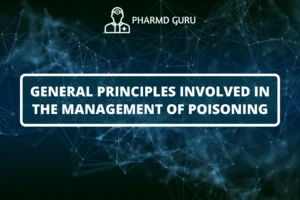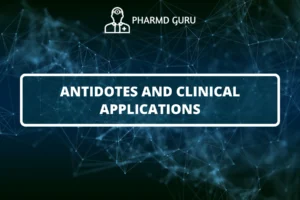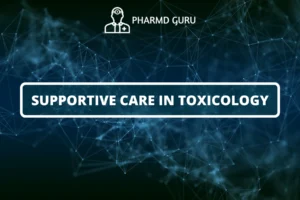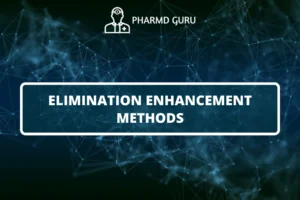Gut decontamination is a topic in Clinical toxicology, which covers: Introduction to Gut decontamination and various methods in removal of poison in the body like: Emesis, Gastric lavage, Catharsis, Activated charcoal, Whole bowel irrigation.
SCROLL DOWN TO THE BOTTOM OF THE PAGE FOR ACTUAL NOTES
TABLE OF CONTENTS:
- Introduction
- Indications for Gut Decontamination
- Methods of Gut Decontamination
- 3.1. Activated Charcoal Administration
- 3.2. Gastric Lavage
- 3.3. Whole Bowel Irrigation
- Considerations and Precautions
Introduction
Gut decontamination is a crucial intervention in cases of poisoning or toxic ingestions. It involves the removal or reduction of toxic substances from the gastrointestinal tract to prevent their absorption and minimize potential harm. This article explores the indications for gut decontamination, various methods used, and important considerations surrounding this procedure.
Indications for Gut Decontamination
Gut decontamination may be considered in the following situations:
- Recent Ingestion: When a toxic substance has been ingested recently and is still present in the gastrointestinal tract, gut decontamination can help reduce its absorption.
- Potentially Lethal Substances: In cases where the ingested substance is potentially life-threatening even in small amounts, gut decontamination can be performed as a precautionary measure.
- Delayed Presentation: If a patient presents late after ingestion, gut decontamination may still be considered if the substance has not been fully absorbed.
- Extended-Release Formulations: Certain medications or substances come in extended-release formulations, which release the active ingredient slowly over time. Gut decontamination may be useful in preventing further absorption of the extended-release substance.
- Toxic Ingestions without Specific Antidotes: In the absence of specific antidotes for a particular toxin, gut decontamination can be employed as a supportive measure.
It is important to note that gut decontamination is not appropriate or necessary in all cases of poisoning. The decision to perform gut decontamination should be based on careful assessment of the individual patient and the specific circumstances.
Methods of Gut Decontamination
Several methods are available for gut decontamination, including:
3.1. Activated Charcoal Administration
Activated charcoal is a commonly used agent for gut decontamination. It works by adsorbing toxic substances in the gastrointestinal tract, preventing their absorption into the bloodstream. Key points about activated charcoal administration include:
- Timing: Activated charcoal is most effective when administered within one hour of ingestion, but it can still be beneficial up to several hours after ingestion, depending on the substance.
- Dosage: The appropriate dosage of activated charcoal varies depending on the patient’s weight and the substance ingested. It is typically administered orally in the form of a suspension or through a nasogastric tube.
- Precautions: Activated charcoal should not be administered if the patient has an impaired airway protective reflex, is at risk of aspiration, or if the substance ingested is not adsorbed by activated charcoal (e.g., strong acids or alkalis, metals, alcohols).
3.2. Gastric Lavage
Gastric lavage, also known as stomach pumping, involves the irrigation of the stomach to remove ingested toxins. Key points about gastric lavage include:
- Procedure: A nasogastric tube is inserted into the stomach, and lukewarm water or saline is instilled and then aspirated to remove the contents. This process is repeated until the returned fluid is clear.
- Timing: Gastric lavage is generally performed within one hour of ingestion. However, it may be considered up to several hours after ingestion in select cases.
- Precautions: Gastric lavage is contraindicated in cases of caustic substance ingestion, risk of aspiration, gastrointestinal perforation, or when the procedure poses significant risks to the patient.
3.3. Whole Bowel Irrigation
Whole bowel irrigation involves the administration of a large volume of a polyethylene glycol solution to flush the entire gastrointestinal tract. Key points about whole bowel irrigation include:
- Procedure: Polyethylene glycol solution is administered orally or via a nasogastric tube, with the goal of achieving clear rectal effluent.
- Timing: Whole bowel irrigation may be considered in cases where sustained-release or enteric-coated formulations have been ingested. It can also be used to remove ingested packets or body packers.
- Precautions: Whole bowel irrigation should be avoided in patients with gastrointestinal obstruction, ileus, or hemodynamic instability.
Considerations and Precautions
When performing gut decontamination, healthcare professionals should consider the following:
- Individual Assessment: Gut decontamination methods should be tailored to the patient’s condition, the substance ingested, and the time since ingestion. It is crucial to weigh the potential benefits against the risks and complications associated with each method.
- Airway Protection: Adequate airway protection should be ensured throughout the gut decontamination process to prevent aspiration.
- Monitoring: Continuous monitoring of vital signs, electrocardiography (ECG), and oxygen saturation is essential during gut decontamination procedures.
- Collaboration: Gut decontamination should be performed in consultation with a toxicologist or poison control center for guidance and expert advice.
ACTUAL NOTES




